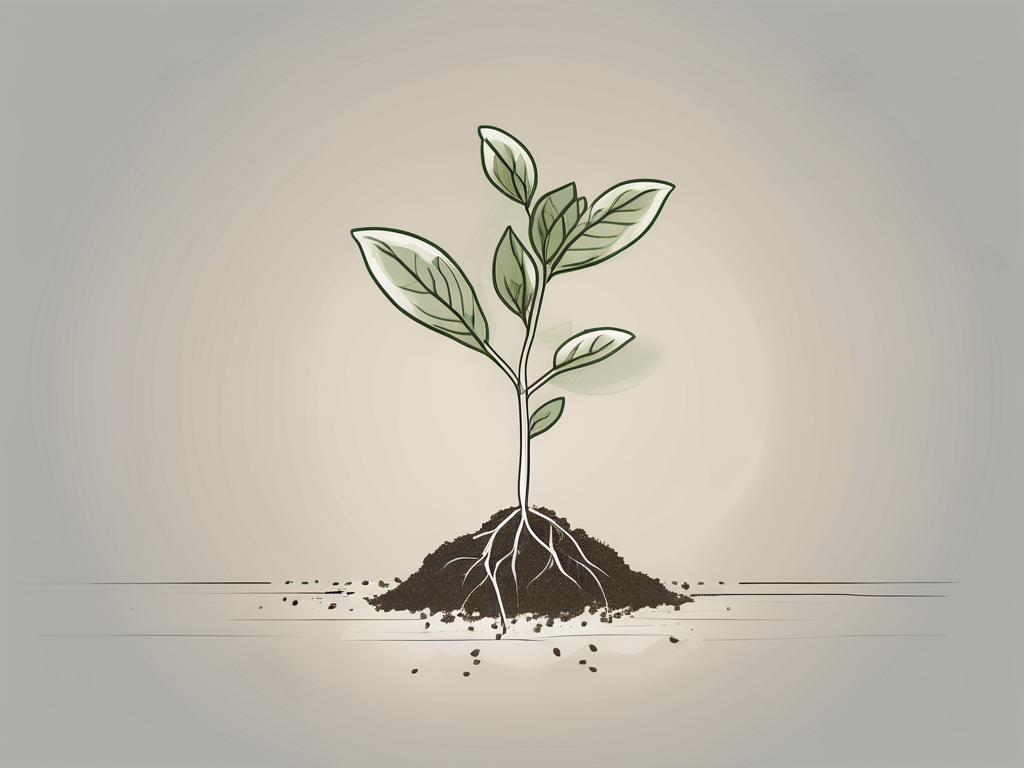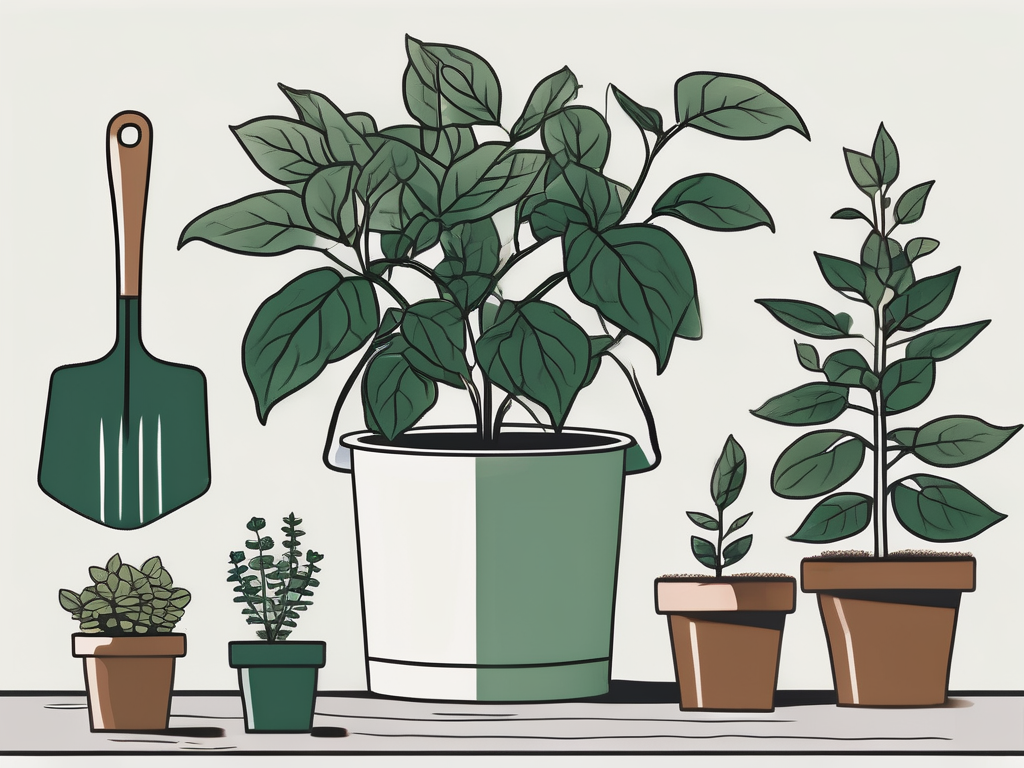
If you're a proud owner of a spider plant and have recently repotted it, you may be surprised and concerned to find that your plant is wilting. But fear not, because there are several reasons why this might be happening, and in this article, we'll explore those reasons and provide you with some possible solutions to revive your beloved spider plant.
Understanding the Spider Plant: An Overview
Before we dive into the specific causes of wilting after repotting, let's take a moment to familiarize ourselves with the spider plant. Also known as Chlorophytum comosum, this popular and low-maintenance houseplant is loved for its attractive foliage and air-purifying qualities. Spider plants have long, arching leaves that are typically green with white stripes, giving them a unique and eye-catching appearance.
Spider plants are native to tropical and southern Africa, where they can be found growing in the wild. They belong to the Asparagaceae family and are closely related to other popular houseplants like the snake plant and the peace lily. The spider plant's scientific name, Chlorophytum comosum, is derived from the Greek words "chloros," meaning green, and "phyton," meaning plant.
In addition to their aesthetic appeal, spider plants are known for their ability to improve indoor air quality. They have been found to effectively remove harmful pollutants such as formaldehyde, xylene, and carbon monoxide from the air, making them a great choice for homes and offices.
The Characteristics of a Healthy Spider Plant
A healthy spider plant will have vibrant green leaves, turgid stems, and a well-established root system. The plant should be actively producing new growth, with no signs of discoloration, spots, or wilting. Spider plants are known for their ability to produce offsets or "babies" that can be easily propagated to create new plants, and a thriving spider plant will often have numerous offshoots springing up from the base.
When it comes to caring for a spider plant, it's important to provide it with the right conditions. Spider plants thrive in bright, indirect light, but they can also tolerate lower light levels. They prefer temperatures between 60-75°F (15-24°C) and moderate humidity. Overwatering can be detrimental to spider plants, so it's crucial to allow the soil to dry out between waterings.
Spider plants are relatively pest-resistant, but they can occasionally be affected by common houseplant pests such as spider mites and mealybugs. Regularly inspecting the leaves and stems for any signs of infestation and promptly treating any issues that arise will help keep your spider plant healthy and pest-free.
The Importance of Proper Repotting
Repotting is an essential part of caring for a spider plant, as it allows the roots to have more space to grow and absorb nutrients. However, if not done correctly, repotting can cause stress to the plant, leading to wilting and other signs of distress. Proper repotting involves selecting a suitable pot with good drainage, using well-draining soil, and ensuring that the plant is not exposed to excessive sunlight or cold temperatures during the process.
When repotting a spider plant, it's important to choose a pot that is slightly larger than the current one to allow for future growth. The new pot should have drainage holes to prevent water from pooling at the bottom, which can lead to root rot. Using a well-draining potting mix that is specifically formulated for houseplants will provide the right balance of moisture retention and aeration for the roots.
Before repotting, it's a good idea to water the plant thoroughly to ensure that the root ball is adequately hydrated. Gently remove the plant from its current pot, being careful not to damage the roots. If the roots are tightly bound, gently loosen them with your fingers or a tool to encourage new growth. Place the plant in the new pot, adding fresh soil around the roots and gently firming it in place.
After repotting, it's important to give the spider plant some time to adjust to its new environment. Keep the plant in a shaded area for a few days and gradually reintroduce it to its usual light conditions. Water the plant sparingly during this time, allowing the soil to dry out slightly between waterings. With proper care and attention, your spider plant will quickly recover from the repotting process and continue to thrive.
Common Causes of Wilting After Repotting
Now let's delve into the potential reasons why your spider plant may be wilting after being repotted. By identifying the cause, you can take appropriate action to help your plant recover and thrive.
Shock from Transplanting
Plants can experience shock when they are transplanted, especially if the change in environment is drastic. When repotting a spider plant, there is a chance that it may experience shock due to the disturbance of its roots. To minimize shock, be gentle when handling the plant's roots and avoid damaging them during the repotting process.
Additionally, it's important to consider the temperature and humidity levels of the new environment. Sudden changes in these factors can also contribute to transplant shock. If you've moved your spider plant to a significantly different climate, consider acclimating it gradually by exposing it to the new conditions for short periods of time before fully transplanting.
Inadequate Watering Practices
Improper watering can also contribute to wilting after repotting. Overwatering or underwatering can both cause stress to the plant, affecting its ability to absorb water and nutrients. It's important to find the right balance by watering the spider plant thoroughly but allowing the soil to dry out slightly between waterings.
When repotting, it's a good idea to check the moisture level of the new soil before watering. If the soil is already moist, hold off on watering until it dries out a bit. On the other hand, if the soil feels dry, water the plant thoroughly to ensure proper hydration.
Unsuitable Soil Conditions
The type of soil used for repotting can make a significant difference in the plant's overall health. Spider plants prefer well-draining soil that retains some moisture but does not become waterlogged. Using a high-quality potting mix specifically formulated for indoor plants or adding perlite to increase drainage can help prevent wilting caused by overly compacted or water-retentive soil.
In addition to choosing the right soil, it's important to consider the size of the new pot. If the pot is too large, excess soil can retain too much moisture, leading to root rot and wilting. On the other hand, if the pot is too small, the plant's roots may become cramped and hinder its ability to absorb water and nutrients.
When repotting, assess the size of the spider plant's root system and choose a pot that provides enough room for growth without being excessively large. This will help maintain optimal soil conditions and prevent wilting.
Identifying Signs of Distress in Your Spider Plant
Now that we've explored the common causes of wilting, let's discuss how to recognize the signs of distress in your spider plant. Detecting these signs early on will enable you to take prompt action and address the issue before it worsens.
Wilting Leaves and Stems
One of the most apparent signs of distress in a spider plant is wilting leaves and stems. If you notice that your plant's leaves are drooping, losing their firmness, or turning yellow, it's a clear indication that something is amiss. Wilting can be a result of various factors, including inadequate watering, root problems, or environmental stress.
Discoloration and Spots
Discoloration and spots on the leaves can be another telltale sign that your spider plant is struggling. Leaves may develop brown or yellow patches, indicating nutrient deficiencies, overexposure to direct sunlight, or diseases such as fungal infections. Regularly inspect your plant's leaves to catch any signs of discoloration early on.
Root Health and Issues
The health of a plant's roots is vital for its overall well-being. Healthy roots should be firm, white, and spread evenly throughout the soil. If you suspect root problems, gently remove the spider plant from its pot and examine the roots. Healthy roots will exhibit minimal browning or decay. Any signs of rot, mushiness, or an unpleasant odor indicate root issues that need immediate attention.
Steps to Revive a Wilting Spider Plant
If you've determined that your spider plant is wilting after repotting, there are several steps you can take to revive it and help it regain its health and vitality.
Adjusting Watering Techniques
Assess your watering habits and make any necessary adjustments. Ensure that you are neither overwatering nor underwatering the plant. Spider plants prefer consistent moisture, so water thoroughly and allow excess water to drain away. Avoid leaving the plant sitting in standing water, as this can lead to root rot and further damage.
Modifying Light and Temperature Conditions
Evaluate the light and temperature conditions that your spider plant is exposed to. Spider plants enjoy bright, indirect light, but too much direct sunlight can scorch their leaves, leading to wilting and discoloration. Similarly, extreme temperature fluctuations can stress the plant. Aim for a comfortable indoor temperature range, avoiding drafts and sudden changes.
Treating Root and Soil Problems
If you suspect root issues or soil problems, take appropriate measures to address them. Carefully remove the plant from its pot, trim away any damaged or rotting roots, and repot it using fresh, well-draining soil. Additionally, consider applying a diluted houseplant fertilizer to replenish essential nutrients that may be lacking.
In conclusion, if you find your spider plant wilting after repotting, don't panic. By understanding the characteristics of a healthy spider plant, identifying common causes of wilting, recognizing signs of distress, and taking appropriate steps to revive your plant, you can help it recover and thrive once again. With a little care and attention, your spider plant will bounce back, gracing your home with its beauty for years to come.












